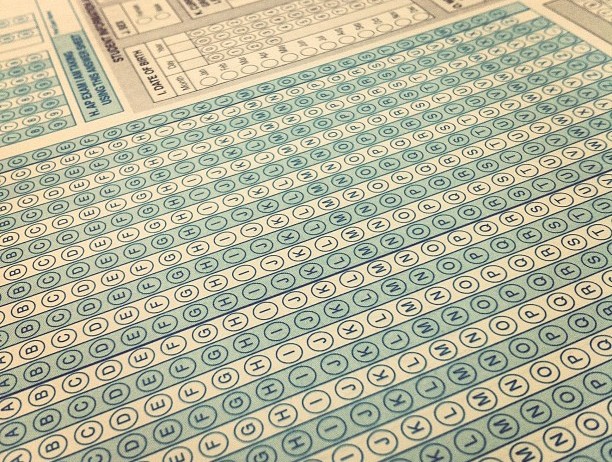Right now, assessment is more than just a buzzword in the Education field. It’s a talking point, a point of contention, and an anxiety trigger for many students (and even some teachers).
As an Education student who is the child of two public school teachers, I’ve heard and continue to hear a lot about assessment from peers, teachers, professors, and parents in general. Particularly now that No Child Left Behind is no more, it’s important for parents and students alike to understand assessment and what it means, not only for schools but for the individual learner. For now, I’m going to push district and state mandates aside and just look at the everyday assessments teachers conduct and students experience in classrooms.
Before signing the Every Student Succeeds Act into law, President Obama took to Facebook in October to address the issue of how much time kids spend in school preparing for standardized tests rather than actually learning.
Assessment is everywhere in the classroom, from kindergarten to higher ed. Though a recent survey commissioned by the Center for American Progress (CAP) found that 49% of parents think there is too much standardized testing in schools, CAP’s senior education policy advisor, Melissa Lazarín, points out that a poll conducted by the Associated Press-NORC Center for Public Affairs Research found that 75% of parents think that it’s necessary “to regularly assess whether their children are on track to meet state academic goals.” It’s clear that parents are conflicted, and that conflict may stem from a lack of understanding.
Since I’m not an expert on testing and assessments, I’ve asked Dr. Diane Kern, an Education professor at the University of Rhode Island to break down assessment, define its parts, and describe its role in the classroom.
Assessment vs. Evaluation
Dr. Kern points out that it’s important to understand the difference between an assessment and an evaluation. “Assessment [emphasis mine] involves informal, formal, and self-evaluation measures,” Dr. Kern says, “such as asking a student what they learned in school today (an informal assessment), asking a student how they think they’re doing and what they need to do differently in a task (self-assessment).” That last one, self-assessment, can be used by students to monitor their own progress, set goals, and take responsibility for their own learning. Formal assessments are those quizzes, tests (routine and standardized), essays, reports, projects, and so on.
Evaluation, she says, “is a subset of assessment in which we use assessment information to measure for a variety of purposes.” A student’s report card, a classroom’s progress, and yes, the dreaded standardized test, which Dr. Kern points out is exactly what allows educators to compare student progress across classrooms, schools, districts, and states. The results of these tests inform curriculum and instruction.
While there are instances of standardized test data being misused to evaluate teachers or to determine if a student is ready to advance to the next grade level or graduate high school, data from multiple assessments and evaluations is normally required to make such an important decision.
I hope this clarifies assessment vs. evaluation. A large part of our mission here at LearningWorks for Kids is helping parents understand the ways executive functions are linked to academic success. If you’re concerned that your child isn’t keeping up with the rest of her peers or isn’t being assessed fairly, there are many resources available to you. We have a robust archive of blog articles about boosting children’s executive functions and improving mental health using traditional and technological methods, as well as a vast library of video game Playbooks and App+ reviews to help you do so. We also recommend this excellent article from Understood.org about the difference between an Individualized Education Program (IEP) and a 504 Plan and whether either is an option for your child.
Featured image: Flickr user Benjamin Chun




